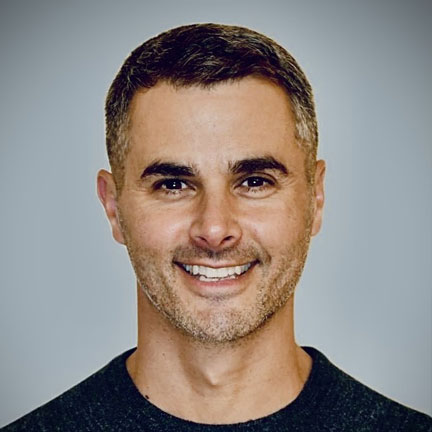You feel stressed because you don’t have a goal.
This simple truth resonates deeply in our schools today.
Many of our colleagues are stressed—overwhelmed with classroom behaviors, daily demands, and a persistent feeling of being stuck. Our time is consumed by reacting: responding to calls and emails, adapting to constant shifts, managing curriculum changes, juggling the everyday work of lesson planning, creating safe learning spaces, and ensuring student progress.
The crucial lesson here is clear: What’s wrong, stressful, and overwhelming is always available.
Finding Engagement Through Problem-Solving
How can we become more engaged with our work and less stressed in our classrooms? The answer might begin with finding the problems. While this might seem like an oversimplification, it’s a powerful truth: We are more engaged when we’re actively working to solve problems. In fact, our commitment to solving problems directly correlates with our growth in personal agency through self-education. Let me walk you through a recent example for me that might sound familiar.
My colleagues and I were in an Instructional Support Team (IST) meeting where teachers ask for recommendations about what they can do in Tier 1 instruction to support a student with specific areas of concern.
Next, the group of professionals (teachers, administrators, coaches, service providers, and so on) ask clarifying and probing questions followed by recommendations and strategies for the teacher(s) to go back to the classroom and try.
The receiving teacher(s) do the most teacher-y things next: They write, nod politely, and begin contemplating where and when these recommendations are going to fit into the 400 other things in their day.
It’s stressful.
It’s at this point that we gloss over the most important opportunity. The recommending team of professionals—all well-meaning—attempt to solve the problem from their perspective. When we do not clarify the goal from the teacher’s perspective with the best interest of the student, we miss a crucial step.
Seeing Problems as Goals
Every problem contains an underlying goal waiting to be discovered. Our real job is to get crystal clear on three things:
- the preferred future,
- our current reality, and
- the options available to us.
When coaching colleagues to reframe their problems as goals, I often ask one simple question: “Tell me, if we were to write this problem as a goal, what would you say?” After my colleagues share their thoughts, I introduce a straightforward framework that helps shift our attention from problem-focused to solution-focused thinking.
Frameworks Are Helpful
While discussing effective goals in education, it’s impossible to ignore two powerful frameworks: SMART goals and what Jim Knight refers to as PEERS goals. Both offer valuable characteristics for goal-setting:
SMART goals have the following characteristics:
- Specific
- Measurable
- Attainable
- Relevant
- Timely
PEERS goals embody characteristics related to education:
- Powerful
- Easy
- Emotionally compelling
- Reachable
- Student-focused
These characteristics are all valuable, but the key question becomes “How do we synthesize these elements into a framework that’s both memorable and practical for daily decision-making?”
One Framework for Clear Direction
Let’s return to my colleague from the IST meeting. After observing their stress about implementing the new suggestions, I offered a different approach. I proposed spending one coaching session transforming their problem into a concrete, actionable goal. This shift alone would help us identify solutions that could generate energy and build confidence.
My colleague was relieved and hopeful.
Below is the exact goal we wrote:
- By the end of [December], [student] is able to identify the upper- and lowercase letters and sounds of the nine letters and sounds taught whole group so that she can access more letters and sounds to become more confident and be ready to approach CVC words and decoding.
We knew the problem. We needed the preferred future.
I relied on the following framework:
By_____, I am/students are_____________, so that_____________.
- The by makes it time bound and shapes our focus.
- I am/student(s) are makes the goal actionable and, when coupled with the time-bound element, creates a sort of permission slip that we will be taking action and experimenting with a focus that creates the space that this work might be in progress but is happening and we are evaluating our progress and adapting accordingly.
- So that attaches a deeper meaning to the goal that makes it pop with our why and the positive impact this goal might have on the people we are working with.
Goals as Direction, Not Destinations
Our brains are naturally wired to solve problems. By recasting problems as questions, we open the door to creative problem-solving, because goals create direction. This direction isn’t a final destination but rather a pathway that helps us identify necessary skills, learning opportunities, and potential solutions worth exploring.
We make progress by clarifying direction, generating ideas, collecting evidence, and modifying our actions based on our new learning along the way. The goal serves as a beacon, helping us understand where we are in relation to it and the necessary adjustments needed to get back on track. If we end up left or right of the goal, we have the awareness to get back on track, make the necessary adjustments, and identify new learning needed to meet the goal.
Clarifying the goal and committing to it will automatically level up your skill stack. You will enter that learning one way and exit with an expanded horizon and new skills as a result.
While having a dedicated thought partner can enhance this process, remember that you can create these conditions for yourself by committing to your own learning cycle.
The key to success is to set the goal and begin taking action, because if you wait too long without setting your own goals, someone or something will inevitably decide your goals for you. This approach to goal-setting can reduce stress and build in some engagement because it empowers us to take control of our own learning and growth.


